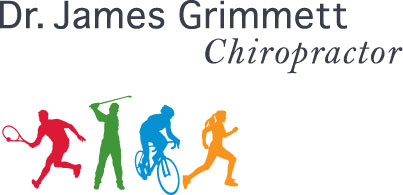Basically, if you have strong gluteal muscles (buttocks) it is rare to have low back pain.
Furthermore a strong buttock is fundamental for being able to move quickly in badminton and squash. Foot work and in particular speed that enables us to get to the next shot is something most players strive to improve. That extra bit of speed can really bring your game up. The quicker you can get to the bird or ball the better you can set up to execute your shot.
Athletes be it in their youth training or coming back to the sport after an hiatus will attest to the improved performance directly corresponding to their improved speed. I can certainly speak from personal experience as relating to my performance level and my court speed.
I should interject here to state that in the act of running, jumping and lunging many muscles are working as a team. A key muscle group for moving quickly and powerfully is the gluteal/hip group. Weakness in this area will be expressed in poor performance and increased risk of injury.
This leads me into the injury domain. I’m not just talking about low back problems or hip/gluteal pain with the resulting need for early hip replacement surgery. Good hip and pelvic joint control is necessary to best transfer load to other body areas.
Weak gluteal muscles commonly are the cause of many of the common lower extremity problems. Be it runner’s knee(patellofemoral pain syndrome), iliotibial band syndrome, common forms of shin splints, achilles tendinitis, or forms of plantar fasciitis addressing the weak hip muscles should be part of the rehabilitation program.
As far as strengthening the hip and gluteal muscles there are lots of great exercises to accomplish this. Unfortunately for some it is not as simple as doing these exercises. The proper activation of these muscles must come from good body position/posture. This includes good body posturing during the movement pattern in the exercise.
For example, I frequently tell my patients that if they could do a ‘proper’ squat they would not be in my office seeking treatment.
How do you know if you are getting the desired benefit from your exercise program? It’s really about results. If your goal it to improve performance you should see or feel the difference such as being faster on the court. I am not talking over night but over weeks and months you should be feeling that you are globally stronger. This might be as simple as you feeling lighter and quicker when going for a shot at the front of the court.
If you are injured, say with back or knee pain and are at the stage of doing corrective exercises in your rehab program you should feel improvement. This might be noticed by you getting out of a chair more easily or that you can now put on your socks with less effort. Oh, yes and less pain and protective guarding.
Clearly if you are doing exercises and are experiencing any pain outside of mild post exercised soreness you should stop and get professional advice.
Hopefully, this article brings some added motivation if needed to build that buttock!
